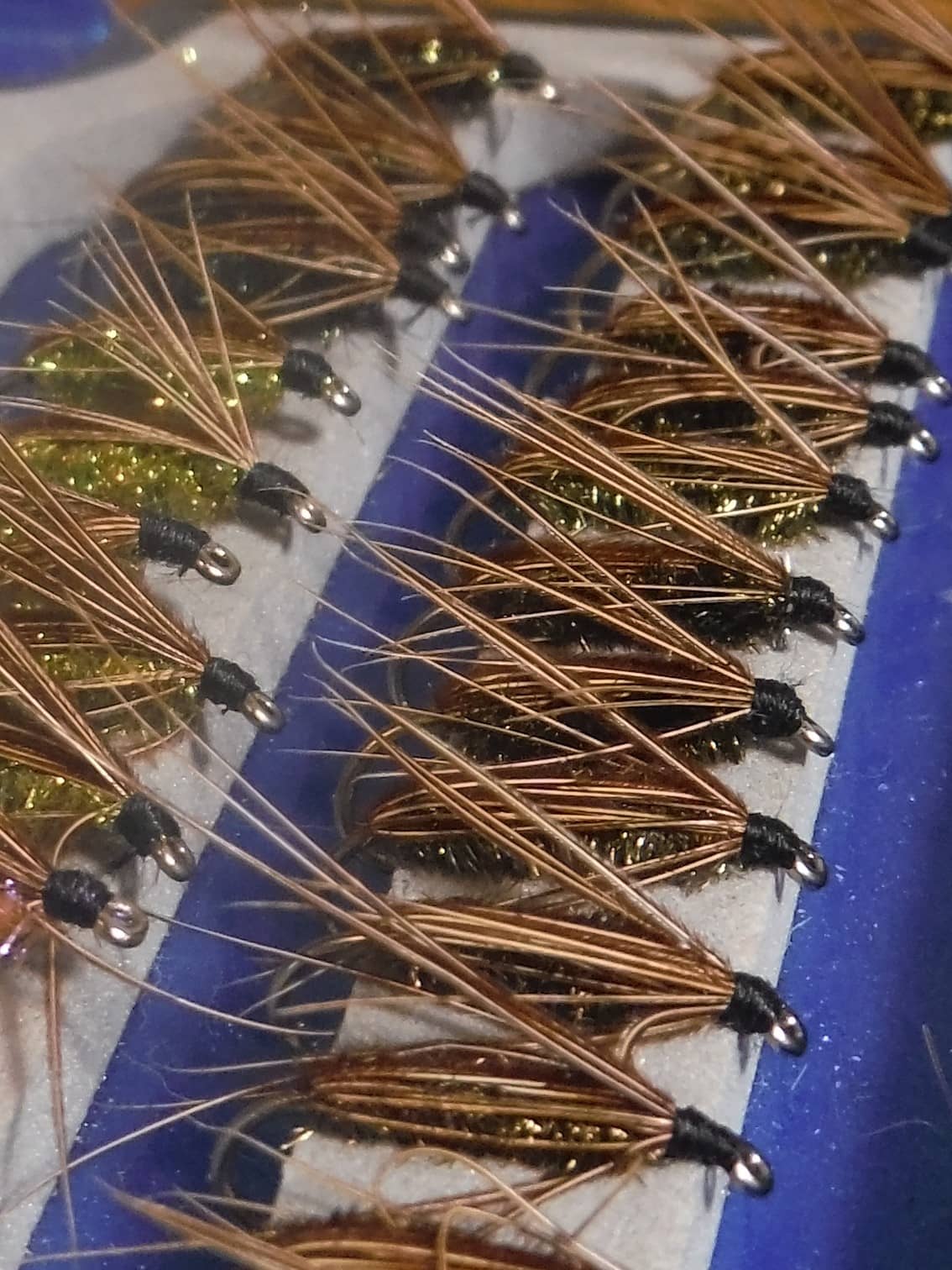
Close Enough. While the Shwapf fly pattern – like these recently tied by the author – doesn’t look exactly like something alive, it has many traits that trigger a reaction from trout, both wild and stocked. Simonson Photo.
By Nick Simonson
There’s a theory out there on how the world will end, and it’s called “grey goo.”
The idea is that sometime in the far distant future, the planet is overrun by self-replicating microscopic robots that humanity created for one benevolent purpose or another, which ultimately get out of our control. In the end, the nanobots eventually consume everything on the planet in order to continue to replicate until a vast grey blanket of the compiled nanobots covers the Earth and they have nothing left to eat. The thought of it didn’t keep me up at night, as the idea was so far-fetched, it seemed like science fiction.
That is until a few days ago.
While scrolling through the news articles on my phone after an evening walk with my lab, I came across a curious headline regarding the creation of reproducing creatures – one part biological, the other robotic – that had recently been detailed in a scientific journal. While the article assured me and all the other readers who may have stumbled on it buried at the bottom of the mainstream news organization’s application, that the small, Pac-Man-like creatures created in a lab from pre-viability frog eggs could be terminated by their handlers, it also mentioned how the organisms figured out a way to create copies of themselves by assembling biological debris in their holding jars, building a little clone. There was even a short video of the amazing occurrence. The little things didn’t look like life as we know it, but they were a close enough approximation to make me nervous.
As I brooded over whether the story was cool and signified a new era for human advancement with all the things these xenobots or their progeny could possibly do for us in the future, or creepy in the fact that they will likely bring about our downfall when they inevitably escape from the unnamed location in which they were stored, I wrapped the last turns of thread around my first fly of the tying season and thought, that like the xenobots, the pattern didn’t look like something alive, but it was a close enough approximation and always had been.
I can imagine the shock of the various trout I caught on the small waters in South Dakota last spring with the same model of swept pheasant tail fibers over a dubbing body. When they rose to take it, they must have felt some sort of surprise that such a creation came to be. It was one that looked so positive, a large chunk of protein, with leggy, gilly appendages like other edible things in their world, gently skimming below the surface, ready to sustain them for another day. In reality, the fly was a rude awakening triggering a run for the fish’s life, and a challenging battle for me on the other end of the line. While to me, the fly was a simple imitation of the attributes of a few aquatic insects, it didn’t look like any one of them in particular. But what I saw didn’t matter. To the trout, it looked like breakfast.
The same fly too, with its brown hue in pertinent part, likely looked like the pellets used to feed the stocked trout that were planted in the lake a few miles away from my home, and it has always served as a good starting point for those fish that just hit the water each spring. Again, it probably doesn’t look like the pre-formed protein flung into the rearing ponds for those hatchery rainbow and brown trout which they eat in the weeks leading up to their release, but it always seems close enough to elicit a take.
Through the therapy of wrapping feather and fuzz to a few dozen hooks with a strand of black thread and laying them all out in order along the first two rows of my trout box, I felt the anxiety that the story of the xenobots brought fade off into the dark of the late autumn night. While I wondered what was next for the mechanically altered frog cells that had taken on a life of their own in the research lab, those thoughts were replaced by the ones of my creations eliciting the same response from whatever fish I might encounter with them next spring. It only seemed fitting that such a duality came to be from a close approximation of life, be it in the petri dish in some research lab, or at the end of my fly line.
While I’ll never know for sure what the trout see in my wintertime creations, each spring the approximation always seems close enough, and with a mashed barb, a rubberized net and a quick release, it likely won’t be the end of their world either.
